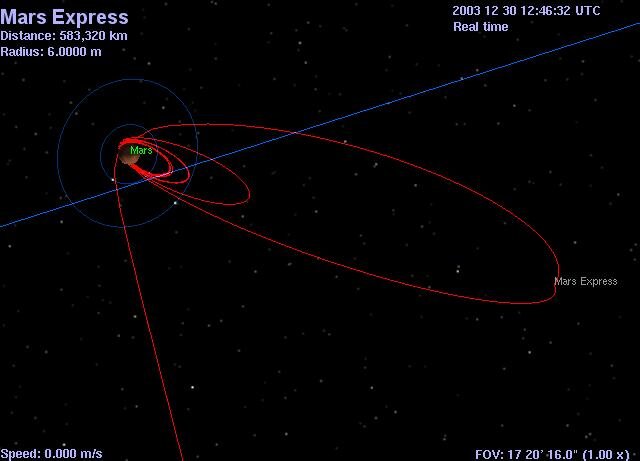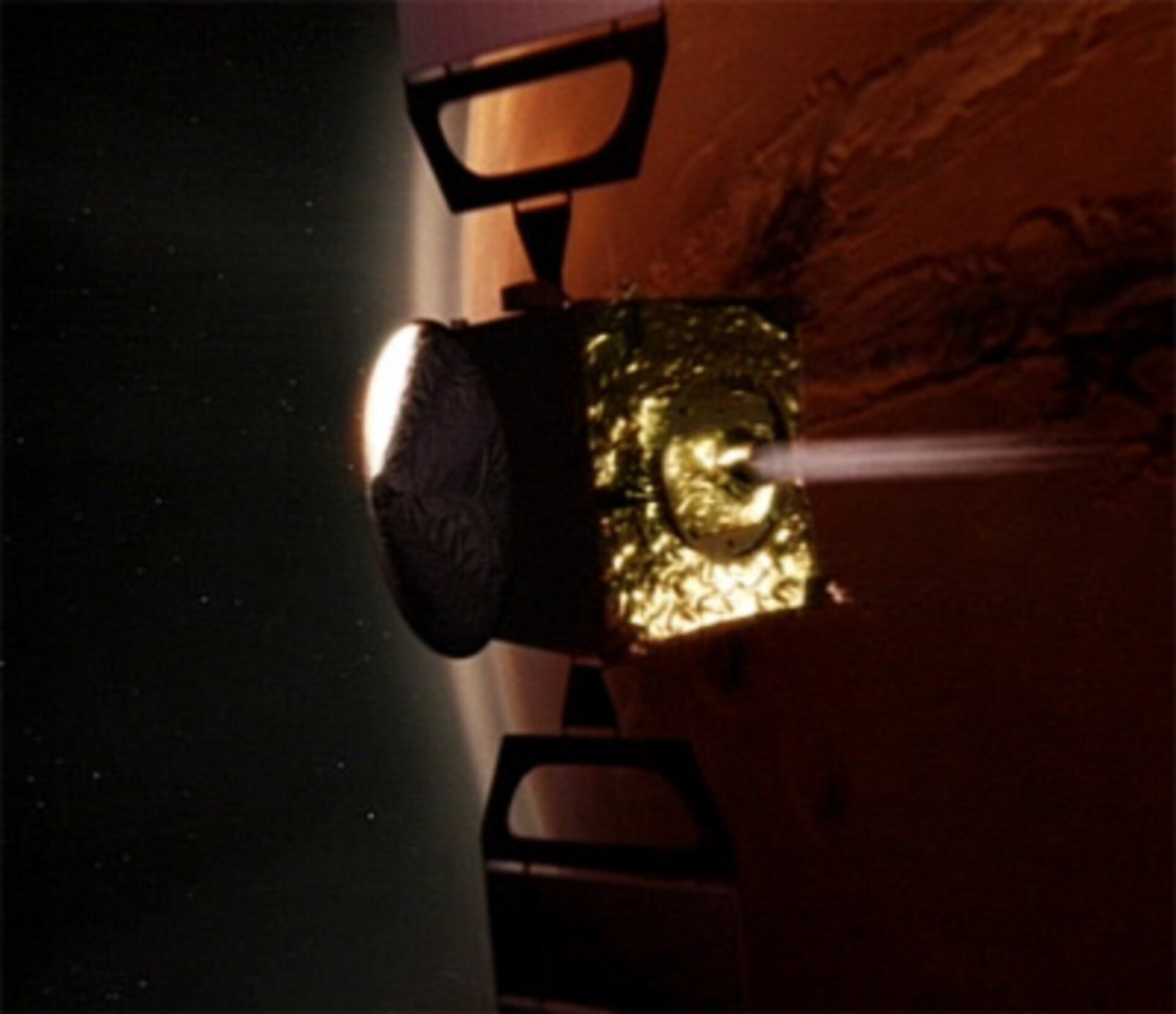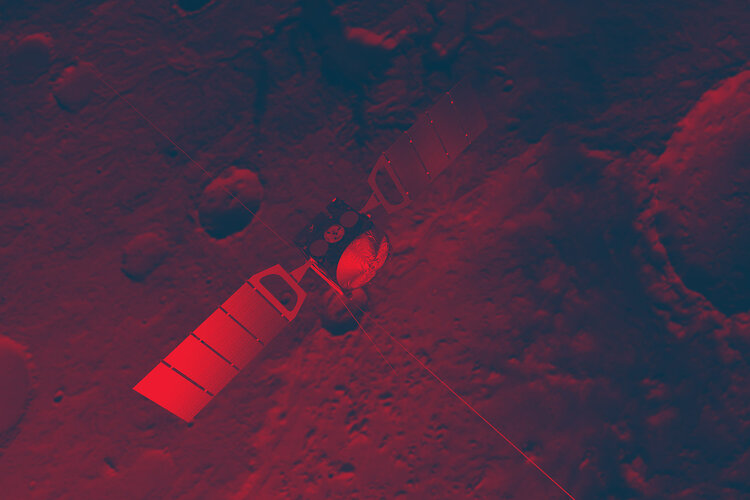Closing in on the Red Planet: Mars Express orbit lowered
Today at 14:13 CET, ESA’s Mars Express spacecraft successfully executed an essential planned manoeuvre to reduce its orbit around the Red Planet.
A five-minute burn of its main engine brought Mars Express from an orbit apocentre (highest point) of 190 000 kilometres to 40 000 kilometres with a pericentre (lowest point) of about 250 kilometres.
Mars Express will reach its final operational orbit of about 11 000 kilometres by 300 kilometres towards the end of the month after two more scheduled orbit adjustments (using main engine burns) on the nights of 6/7 and 10/11 January.
Today’s key move enables ESA to pursue its Mars mission as planned. First, scheduled scientific observations can begin mid-January and, second, the search for the Beagle 2 lander will become much more accurate.

Michael McKay, Mars Express Deputy Flight Director in Darmstadt, Germany, said: “From the second half of January 2004, the orbiter's instruments will be prepared to scan the atmosphere, the surface and parts of the subsurface structure of Mars with unprecedented precision.
"The High Resolution Stereo Camera, for example, will take high-precision pictures of the planet and will begin a comprehensive 3D cartography of Mars. The MARSIS radar will be able to scan as far as four kilometres below the surface, looking for underground water or ice.
"Also, several spectrometers will try to unveil the mysteries of Martian mineralogy and the atmosphere, as well as influences from the solar wind or seasonal changes.”
On 7 January 2004, at 13:15 CET, the lowest point of the Mars Express flight path will be as close as 315 kilometres to the landing area of the still-silent Beagle 2.
The NASA Mars Odyssey orbiter and several radio telescopes on Earth have been unable to obtain a signal since Christmas, but chances will rise with the approach of the 'mothership' to its 'baby' Beagle 2.
Mars Express and Beagle 2 are the only end-to-end tested systems, giving ESA more confidence of establishing contact with the lander.
Today, 4 January, ESA specialists are meeting with Beagle 2 staff at ESA’s European Space Operations Centre in Darmstadt to define a strategy for modes of interaction between the ESA orbiter and the lander.
Mars Express has Ultra High Frequency (UHF) receivers ready to communicate with Beagle 2. Mars Express Project Manager Rudolf Schmidt and his ESA colleagues are very much looking forward to 7 January 2004.
Dr Schmidt said: “At this precise time, our Mars Express orbiter is in both an ideal flight path and an ideal communication configuration, right on top of the Beagle 2 landing area, at about 86 degrees. In this situation, we should be able to discern the slightest beep from the Martian surface.”
Today’s manoeuvre was another step towards the European exploration of Mars, ensuring both orbiter operations as planned and a precise search of the Beagle 2 lander. ESA is looking forward to an exciting Mars exploration in the next months. The latest news will be posted, as always, at: at http://mars.esa.int








